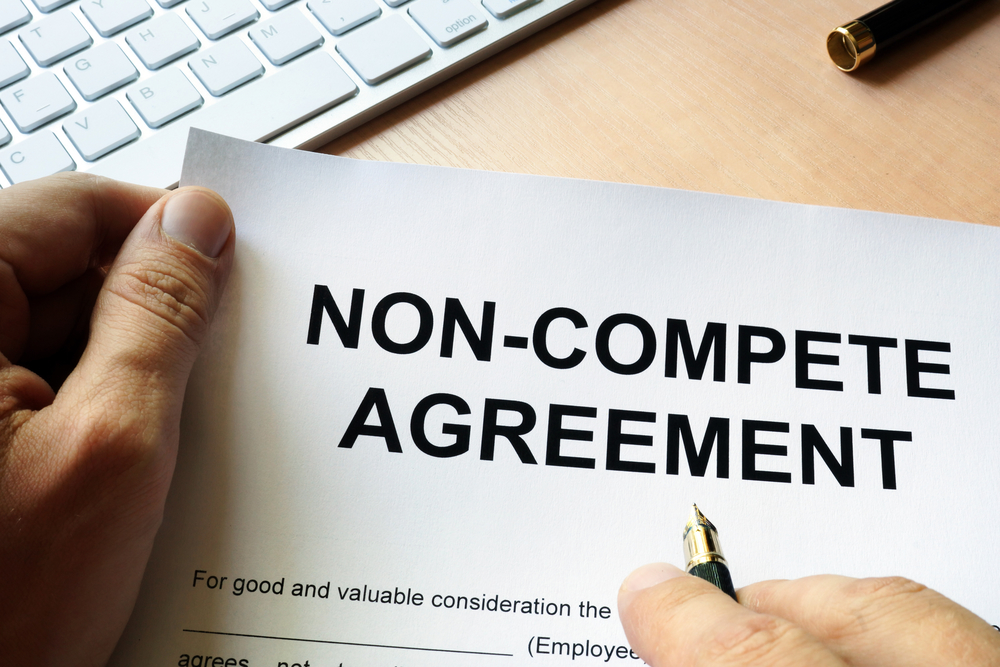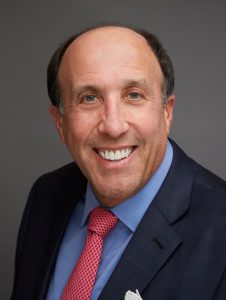What is a Non-Compete?
As all of our readers undoubtedly know, a non-compete provision is a type of restrictive covenant that many employers include in employment and severance agreements. The purpose of a non-compete provision is to restrict a former employee’s ability to work for a competitor after the cessation of his or her employment.
When are Non-Competes Enforceable?
New York courts tend to disfavor non-compete provisions.1 However, as is also well known, non-compete provisions have been enforced where they have found to:
- Impose no greater restrictions than required to protect an employer’s legitimate protectable interests;
- Not impose undue hardship on the employee or be harmful to the general public; and
- Be reasonably limited temporally and geographically.2
Employer’s Legitimate Protectable Interests
In New York, employer’s legitimate protectable interests include:3
- Protection of trade secrets;
- Protection of customer relationships;
- Confidential customer; and
- “Unique” services.
The latter category has rarely been invoked by employers since it is very difficult to prove that an employee rendered unique services that cannot easily be replaced.
Scope of Restrictions
If a New York court determines that a non-compete is necessary to protect a legitimate interest, it will then examine the following three factors:
- Geographic scope of the restriction. New York courts generally conduct a fact-based analysis to determine if a geographic restriction in a non-compete provision is reasonable. New York courts may be willing to enforce a broad geographic restriction so long as the duration of the restrictions is short. For example, in Interga Optics, Inc v. Nash, a Northern District of New York Judge, applying New York law, stated that “[e]ven if the geographic scope were found to be somewhat broad (due to the evidence that the vast majority of Plaintiff’s current clients appear to be limited to North and South America), the restriction is tempered by the brief duration of it.”4 In a February 2020 decision in Markets Grp., Inc. v. Oliveira, a Southern District of New York Judge, also applying New York law, held a non-compete provision unenforceable because it did not contain a geographical limit.”5
- Duration of the restriction. When reviewing the temporal period of non-competes, New York courts have held repeatedly that restrictions of six months or less are generally reasonable. However, like the geographic limitation, this analysis is conducted on a case-by-case basis and courts have also found certain longer non-compete provisions reasonable in light of other circumstances. For instance, an Eastern District of New York Judge held in March 2020 that a five year non-compete clause was reasonable in the context of the sale of a business.6
- The scope of the business activity impacted. New York courts will not enforce a non-compete provision where the scope of the business activity impact is deemed to be too broad or it is not shown to be necessary to protect trade secrets or other confidential information such as customer lists. For example, the New York Appellate Division Fourth Department held that a non-compete provision precluding a former employee of a staffing agency (a physician assistant) from providing medical services to any hospital at which he had provided services through his prior employer was overly broad and therefore not enforceable.7
Other Factors and Situations Considered by NY Courts
Sale of a Business. When there has been a sale of a business, non-compete provisions are more likely to be considered reasonable because they are designed to (i) protect the new owner from having its business usurped by the former owner, and (ii) enable the former owner to extract a higher price in the sale to reward him or her for the goodwill which he or she may have spent years creating.8
Terminated Without Cause. An issue arises when an employee with a non-compete is terminated without cause. The Second Department and at least three judges in the Southern District of New York have ruled that non-compete clauses are categorically precluded from enforcement when an employee has been involuntarily discharged without cause.9 However, the New York Court of Appeals has not issued a per se rule applicable to non-compete provisions in such circumstances. Indeed, in Morris v. Schroder Capital Management International,10 the Court of Appeals stated that “a court must determine whether forfeiture is ‘reasonable’ if the employee was terminated involuntarily without cause.”
In two very recent cases, judges in the United States District Court for the Southern District of New York considered whether non-compete provisions should be enforced where an employee was terminated without cause. In both cases the judges enforced restrictive covenants because they were not persuaded that the former employees had actually been terminated without cause.
In Beirne Wealth Consulting Servs., LLC v. Englebert,11 the relationship between the employees and employer had deteriorated beyond repair. After they were terminated, the defendants argued that the restrictive covenants in their employment agreements were not binding because they were terminated without cause. However, the Court disagreed that the former employees had been terminated without cause and enforced the non-compete provisions.
In a similar case, Kelley-Hilton v. Sterling Infosystems Inc,12 the plaintiff, a former employee, claimed she was wrongfully terminated by the defendant. The plaintiff moved for a preliminary injunction preventing her former employer from enforcing any contractual provisions that would prohibit her from competing with it, soliciting its customers, or hiring its employees. The plaintiff’s motion for a preliminary injunction was denied because the plaintiff failed to show she would be likely to prove she was terminated without cause.
Future of Non-Competes
A proposed New York statute would invalidate no-poach provisions which are sometimes found in contracts between employers. The bill would “prohibit agreements between employers that directly restrict the current or future employment of any employee and allows for a cause of action against employers who engage in such agreements.”13 The purpose of a no-poach provision is to restrict employers from soliciting or hiring another employer’s employees or former employees. But the proposed legislation would outlaw only no-poach agreements between employers and not apply to non-compete provisions in contracts between employers and current or former employees.14
In 2017, the New York Attorney General’s Office proposed BILL A07864A in the New York State Assembly which would substantially limit the enforceability of non-compete provisions. However, the failure of the legislature to adopt that or any similar proposal leads this commentator to believe that such legislation is unlikely to become law in New York in the foreseeable future.
Nonetheless, in view of the historically high unemployment rates caused by the COVID-19 pandemic and the attendant economic hardships being experienced by millions of New Yorkers, this commentator also believes that many New York courts are likely to become much less willing to enforce non-compete provisions other than (i) where the former employee is being paid during the period covered by the non-compete and (ii) in connection with the sale of a business.

Richard B. Friedman
Richard Friedman PLLC
200 Park Avenue Suite 1700
New York, NY 10166
TEL: 212-600-9539
[email protected]
www.richardfriedmanlaw.com
www.richardfriedmanlaw.com/blog
Connect with me on Linkedin
____________________
1 Long Island Minimally Invasive Surgery, P.C. v. St. John’s Episcopal Hosp., 83 N.Y.S.3d 514, 516 (N.Y. App. Div. 2018) (medical practice brought action against surgeon and his subsequent employer, seeking damages and injunctive relief for an alleged breach of a restrictive covenant in the employment contract).
2 Harris v. Patients Med. P.C., 93 N.Y.S.3d 299, 301 (N.Y. App. Div. 2019)(medical group appealed the denial of a motion for preliminary injunction enjoining former employee, a doctor, from breaching restrictive covenants in her employment agreement; the court ruled plaintiff did not have substantial likelihood of success on merits of its claim); see also Intertek Testing Servs., N.A., Inc. v. Pennisi, 2020 WL 1129773 (E.D.N.Y. Mar. 9, 2020).
3 Cortland Line Holdings LLC v. Lieverst, 2018 WL 8278554, at 6 (N.D.N.Y. Apr. 6, 2018). Intertek Testing Servs., N.A., Inc. v. Pennisi, 2020 WL 1129773 (E.D.N.Y. Mar. 9, 2020).
4 Integra Optics, Inc. v. Nash, 2018 WL 2244460, at 7 (N.D.N.Y. Apr. 10, 2018) (court enforced an employer’s preliminary injunction against a former employer as the non-compete agreement was deemed reasonable; specifically, the restriction on geographic scope was considered necessary to protect the employer’s government interest).
5 Markets Grp., Inc. v. Oliveira, 2020 WL 815732 (S.D.N.Y. Feb. 19, 2020) (court affirmed a summary judgement motion in favor of the defendant, a former employee, because the court found the defendant did not violate the non-compete provision of his employment agreement).
6 Intertek Testing Servs., N.A., Inc. v. Pennisi, 2020 WL 1129773, at 19 (E.D.N.Y. Mar. 9, 2020) (building and construction service provider brought action against employee of entity acquired by provider, former employees of provider, and competitor seeking injunctive relief non-compete provision of the contract, the provider was successful).
7 Delphi Hospitalist Servs., LLC v. Patrick, 80 N.Y.S.3d 616, 617–18 (N.Y. App. Div. 2018) (medical staffing agency brought action against physician assistant, seeking to enforce restrictive covenant in assistant’s employment agreement after assistant terminated his contract with agency; the defendant prevailed).
8 UAH-Mayfair Mgmt. Grp. LLC v. Clark, 110 N.Y.S.3d 849, 850 (N.Y. App. Div. 2019)(court granted former employer a preliminary injunction enforcing the non-compete provision of the employment agreement and awarded the plaintiff costs); see also 4D N.Y.Prac., Com. Litig. in New York State Courts § 105:21 (4th ed.).
9 See, e.g., Kelly-Hilton v. Sterling Infosystems Inc., 426 F. Supp. 3d 49 (S.D.N.Y. 2019); Beirne Wealth Consulting Servs., LLC v. Englebert, 2020 WL 506639, at 1 (S.D.N.Y. Jan. 30, 2020).
10 7 N.Y. 3d 616, 621 (2006).
11 Beirne Wealth Consulting Servs., LLC v. Englebert, No. 19 CIV. 7936 (ER), 2020 WL 506639 (S.D.N.Y. Jan. 30, 2020)
12 Kelley-Hilton v Sterling Infosystems Inc., 426 F.Supp 3d 49 (S.D.N.Y. 2019).
13 NY State Senate Bill S3937C, NY State Senate (2020), https://www.nysenate.gov/node/7677776; see also NY State Assembly Bill A05776, NY State Assembly (2020), https://nyassembly.gov/leg/?bn=A05776&term=&Summary=Y&Actions=Y&Votes=Y&Memo=Y&Text=Y&leg_video=1.
14 Ronald W. Zdrojeski et al., The evolving landscape of non-compete agreements-change is underway in New York State-could non-compete clauses become unenforceable? Lexology (2019), https://www.lexology.com/library/detail.aspx?g=222535b1-92aa-47b0-a521-27692a2bd2c4.




